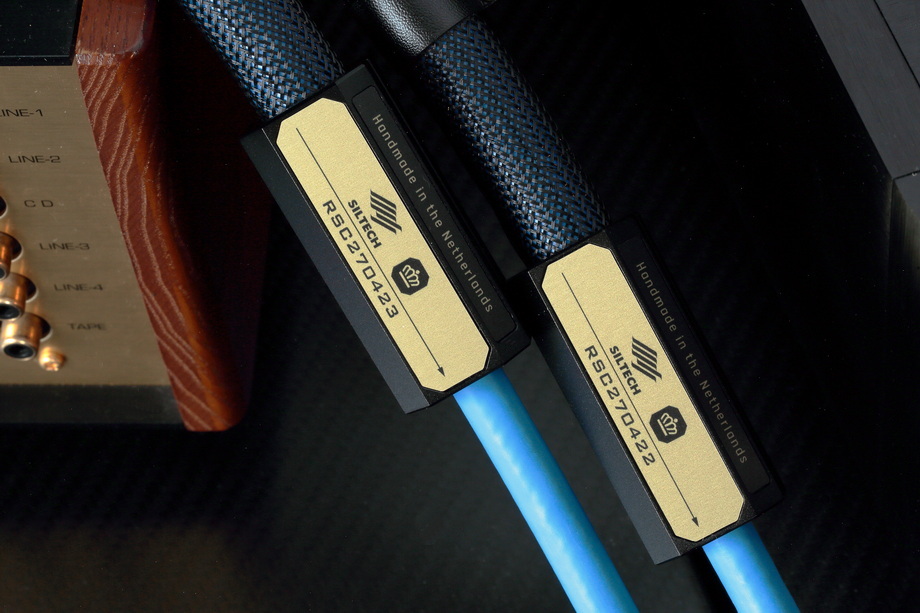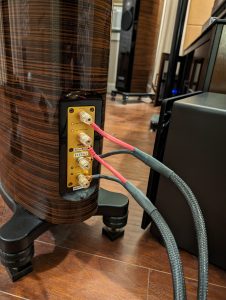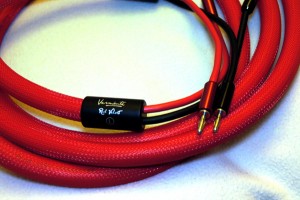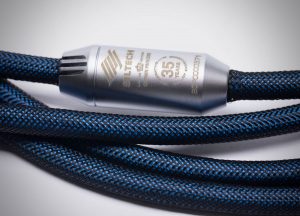The impact of tests in trade magazines is either described as none or of a sort that can change everything; it depends on whether or not the one who expresses such an opinion likes or does not like the press and/or reviews. But if you want to form your own opinion, it would be best if you base it on concrete examples. The argument FOR could be the story of the, at the time Australian company with headquarters in Sydney, the TARA Labs (TARA is written in capital letters, because it is an abbreviation of The Absolute Reference Audio).
The company launched on the other side of the globe in 1986, with their Phase II cable. In 1988 they managed to organize its test in the American magazine Stereophile. The cable proved to be so interesting that the magazine gave him an extremely positive feedback. The response from the press, distributors and consumers was so great that a year later the company moved to the United States and since then is a US company. It was not the first nor the last such Aussie transfer—one could point out some other examples such as: AC/DC and Dead Can Dance. But as far as audio industry is concerned this was the most famous transfer.
The world of cables is divided into those who use copper and those who use other metals, mainly silver. TARA Labs belongs to the former. But this is not the only distinguishing feature of their designs. The second is a commitment to the use of solid core cables, i.e. single, separately insulated wires, in TARA Labs version placed in the tubes filled with air; as air is one of the best insulators. Except for vacuum of course—the company boasted that for the, until recently top interconnect in company's lineup, model The Zero, they managed to get the pressure inside the pipes that is similar to vacuum. Was it really so? Hard to say, but the message was released out into the world.
The conductors utilized by the company were not ordinary round ones. Already in 1992, TARA used wires with a rectangular cross section (Rectangular Solid Core). Today such non-round wires are used also by other brands such as: Acrolink or Acoustic Revive that uses oval ones, but back then it was a true novelty. As for newer ideas introduced by TARA there are some worth mentioning such as: passive float screen that is connected to a special "base" (Isolated Shield Matrix). Currently, TARA Labs is one of the largest manufacturers of specialized wiring. All of its products are made in the USA, which emphasizes the engraving on connectors that reads: "All cables made in U.S.A.".
TARA LABS EVOLUTION
For a long time the top TARA models were The Zero interconnect and The Omega speaker cable. A few years ago, however, American brand diversified top of their lineup and divided cables into two sub-series: Onyx and more expensive, Gold. Although in both cases it was a step forward, it were still variations on the theme, and not a true new quality. The latter was introduced in 2014 with a completely new series called Evolution, with two sub-series: Evolution and Grandmaster Evolution. The first was twice as expensive as the Omega series, and the second is much more expensive than Evolution. Grandmaster Series Evolution, as we read on the official website of the manufacturer, is not available for review. So we do a test of The Evolution Zero interconnect, The Omega Evolution SP speaker cable, and The Omega AC Evolution power cable.
If you know previous models offered by the company and you see and read bout its new products a few things will immediately catch your attention. Let me begin with the least important, or it would seem so, element, its appearance. And this is because it turns out to be extremely important in everyday use, and is a result of particular mechanical design, which is a fundamental building block for sonic performance of the cable.
The Zero Evolution
The Zero Evolution interconnect is not advertised as using "vacuum" as a dielectric. Maintenance of the model that actually used vacuum was extremely difficult and any, even the slightest damage to the cord or plug was tantamount to saying goodbye to the key feature without even knowing about it. The new interconnect uses the classical solution, i.e. solid-core conductors in tubes filled with air. These are rectangle second-generation RCS wires made of SAOF-8N copper. The abbreviation reads: Super Annealed (subjected to aging), Oxygen Free (cleared of oxygen), with a purity of 8N (99.999999%)—the highest, that is achievable today. Wires are polished and coated with a thin layer of a liquid dielectric, which solidifies over time. This coating is intended as a barrier against oxidation of the metal. Each of the wires is a long single crystal, the solution known from the OCC.
The wires are wrapped around a thick inner core and mechanically stabilized so that bending the cable would not change their arrangement, and thus their electrical parameters. Sophisticated design and high quality materials—tube and core made of Teflon and coating wires with a polyethylene used in the aerospace industry—made it possible to achieve extremely low capacitance of the cable, at the level of 2 pF and conductivity 75% higher (I'm quoting manufacturer) than the one of The Zero Gold. A derivative of these changes, but a very important one, is the incredible flexibility—it Is extremely easy to install cable in the system.
After "vacuum" cable Evolution inherited an important component—fantastic plugs, particularly impressive in the RCA version. They constitute a superb termination of thick cables (thick, not because of the number of conductors but because of the mechanical design) and allow for precise clamping them in the socket.
Another 'inherited' element is the virtual ground "station", called HFX (High Frequency eXtendened). This block of aluminum filled with mixture of granules of different kinds of minerals. The solution is similar to ones made by other brands such as: Acoustic Revive, Entreq and Verictum. In this case cables screens are connected to it. Normally, the screen is connected on both sides of the cable to ground, or just on the source side, if negative signal run has a separate cable (it's called: pseudo-balanced design). In the Zero Evolution case screen is not connected on any end, but only to this virtual ground, which extends the frequency response of the cable—with a screen a capacity is introduced, and it blocks high frequencies.
The Omega Evolution SP
The Evolution speaker cables are constructed similarly to the interconnect, the main difference is a greater number of conductors (224). But while The Zero Evolution from the outside – apart from a greater flexibility—does not differ much from The Zero Gold, inasmuch The Omega Evolution is a completely different breed than The Omega Gold and Onyx. They differ primarily with their diameter. Already before some people unrelated to the audio when they saw in my room two hoses running to the loudspeakers, laughed, saying that apparently I took them from the welding machine. With Evolution on my floor they will have to change the repertoire of jokes and go to those about hoses used in hydraulics or irrigation—the new cables are so thick that they could pass for the main system irrigation bus of a large size farm.
Another important difference that goes in opposition to their thickness, is, again, their flexibility—the cables are extremely easy to install in the system and place them whatever way we want. The connects are screwed on—so one can use spades or bananas, and then change one's mind, one is not limited by anything. This is an additional point of contact, which in itself is not beneficial, but I know from experience that the idea works in real life, not in the imaginary world of audiophiles. I do have two sets of plugs and occasionally interchange them.
The Omega Evolution AC
The power chord The Omega AC Evolution is much stiffer than the speaker cable, although it is similar in diameter. The thing is that manufacturer used of a screen with very high coverage, which protects against electromagnetic radiation and RF noise. Also ferrite cores placed at both connectors serve the same purpose.
The new cable features twice as much conductors as the previous flagship—there are 18 rectangular SAOF-8N copper wires for the "hot" run, 18 for the "cold" and 18 for protective run. In run three thick wires were added to improve conductivity. As it turns out, this stiffness stems also from the fact that each of the runs is separately shielded. Plugs come from the Japanese company Oyaide.
TEST METHOD
In High Fidelity's May issue I presented the first part of this test, an assessment of the Krakow Sonic Society (meeting #103, see HERE). The Evolution series was compared to TARA Labs The Omega speaker cable, TARA Labs The Omega Onyx, and Siltech Double Crown IC and speaker cable.
In my own system for comparison I used Siltech Triple Crown and Crystal Cable Absolute Dream interconnects, TARA Labs The Omega Onyx speaker cable and Acrolink Mexcel 7N-PC9500 and Acoustic Revive Power Reference Triple-C power chords.
SOUND
Recordings used for the test (a selection)
- Debussy. Complete Piano Works, perf. Walter Gieseking, "Signature Collection", EMI 55917 2, 4 x SACD/CD
- For Ever Fortune. Scottish Music In The 18th Century, perf. Les Musiciens de Saint-Julien, cond. Robert Getchell, Alpha, 531, CD (2012)
- Istanbul, perf. Hespèrion XXI, Jordi Savall, Alia Vox, AVSA 9870, "Raices & Memoria, vol. IX", SACD/CD (2009)
- Andrzej Kurylewicz Quintet, Go Right, Polskie Nagrania "Muza"/Warner Music Poland 4648809, "Polish Jazz vol. 0", CD (1963/2016)
- Andrzej Kurylewicz Quintet, Go Right, Polskie Nagrania "Muza"/Warner Music Poland 4648809, "Polish Jazz vol. 0", Master CD-R (1963/2016)
- Duke Ellington, Duke Ellington Live!, Nippon Phonogram | EmArcy 842071-2, CD (1989)
- Lucy Ann, Lucky Lucy Ann, Mode Records/Muzak MZCS-1121, "Mode Vocal Collection", CD (1957/2007)
- Ludwig van Beethoven, Overtures, cond. Sir Colin Davis, Symphonieorchester des Bayerischen Rundfunks, Sony Music Direct (Japan) TDGD-90013, "Esoteric 20th Anniversary", SACD/CD (1986/2007)
- Manuel Göttsching, E2-E4. 30th Anniversary, MG•ART, 404, CD (1981/2012)
- Ornette Coleman, The Shape of Jazz to Come, Atlantic Records/ORG Music ORGM-1081, SACD/CD (1959/2013)
- Wolfgang Dauners/Et Cetera, Knirsch, MPS Records/HGBS Musikproduktion UG HGBS 20013, CD (1972/2013)
The Zero Evolution
The TARA Labs interconnects of the top series have always been my own "analog sound" role model, i.e. very smooth, warm, without underlined edges. I understood it this way, that the developers wanted to avoid the problems which recordings provide in abundance. The mission was a success, because with The Zero I never heard any harshness, distortion, dirt, or unpleasant elements in the sound. A very similar behavior to worshiped Wadia's CD Player, model 861.
I do not know how TARA guys did it, but the new The Evolution Zero interconnect is even smoother, more enjoyable, and yet its tone is significantly more open, treble is nicely extended and it never lacks the energy and brilliance. Everything that is happening there, whether it is cymbals, or trumpet and saxophone harmonics, and finally sibilants—everything shines wonderfully, is particularly vivid, and yet smooth.
I know I repeat myself, but I have to say it again—I do not know how the company did it, but presentation is even smoother than the one of Siltech Triple Crown IC. I thought smoother was no longer possible, until I heard The Evolution Zero. The tonal balance of the performance is placed quite high, and yet it initially one has an impression of it being shifted down—a phenomenon that I try to explain with quite powerful bass delivered by TARA that resonates for a long time and always tries to be present. Siltech presents larger images, bigger volume, but it is TARA that provides listener with more relaxed presentation of the recorded music, it's Tara that enchants listener from the very first minute of listening.
I mentioned the bass already, not let me elaborate. A way of showing double bass, organ, piano, electronic instruments, is very pleasant. It's slightly warm presentation, without clear edge forming, and therefore very safe. And if it was another cable from a lower shelf, then one could speak of a slight rounding of shapes and "releasing" sound towards decay phase. In any other case I could indicate a slight remission of control. I'd talk about rounded attack resulting in less precision. But not here, not in this case.
Yes, it's true, it's not a perfect control, there is no precise determination of the attack and stop. But this gives the impression of the presence, density and fullness, while there is no rumble in the room, listener never complains about the extended bass notes, despite the high energy of the whole lower end. The message is perfectly coherent, we do not track individual elements of the performance by simply listen to music.
The soundstage is wide and deep. But quite different from that which I have heard with other top level cables. Let me spoil it for you and tell you right now that I will tell you the same about other elements of the Evolution series: rear plans are as important as the front one, they are shown equally clearly with the same, high level of energy. Volume (size) of instruments, vocals, and non-musical elements placed there are comparable with those on the front.

I have no idea how this is achieved, but I can not deny the facts: the Evolution shows a change of timbre, dynamics, emphasis shifts, change of drums pace that is set at the back of the stage as well as of the leading instrument. I mean that both arouse similar emotions, involve listener in the same way. And they demand the same level of attention. So there is this impression of incredible richness of sound. It comes at a cost, obviously but I'll tell you about it bit later.
First, let me tell you about dynamics—a fantastic, explosive, powerful one. Always equally exciting without tempering in less important moments, and by that generating huge excitement. This is one of the few cables that show this aspect of music intimately, as if we were sitting in front of a stage at a concert. It's a beautiful, exciting performance even smoother than what we get from SILTECH Triple Crown, which took me completely off guard. How they achieved that, how did they combine energy and open treble with such an excellent smoothness—I do not know. Just as I have no idea how they managed to show back plans so perfectly without adding any brightness to the sound, without damping the attack.
The Omega Evolution SP
If you start listening from the interconnect, it will prepare you for most of the changes that will happen after the change of speaker cable. Even this, however, does not prepare listener for the incredible dynamics of this cable with which the it delivers music. This is amazing, because until now I believed that Omega Onyx, which I was familiar with like with almost any other element of my system, will crush every competitor and won't be taken by a surprise by none. And here come a surprise—Omega Evolution is clearly faster and much more dynamic. These are not minor changes but a significant improvement.

This applies to both the foreground and what is behind. I would even say that the latter constitutes its performance, because I have not experienced so far anything like that with any other cable. Hitting drumroll, kettledrum, double bass' solo, guitars are with the new TARA speaker cable simply outstanding. An older version of the cable, Omega Onyx, was phenomenal in this respect. The new cable slightly improves what is happening in the front, but completely changes the rules of the game by showing as clearly dynamic shifts in the rear of the stage.
Omega Evolution is a cable with a much wider bandwidth (perceived) than the old Omega Onyx. It has firmly extended treble and more meaty bass. With the older version nothing was missing at least until I heard Evolution. Also Siltechs—both Double and Triple—Crown seem less "present" at the top of the band, their sound is more "vintage". Powerful treble performance itself is not a feat, I know a lot of expensive cables, which have a high treble energy. But none of them is at the same time so smooth, so—I'm exaggerating, but I want to show it clearly as possible—warm. This is not a "warm" sound in the sense in which we use the word to describe the majority of tube amplifiers. It is "warm" through lack of aggression, smoothing of all irritating elements of the recording, and combining everything into a fluid whole.
It all doesn't mean that the Omega Onyx just gives up without a fight. Despite the fact the its performance is less open, a little more chaotic and there is no the same incredible smoothness and fluidity that Evolution has, it excels however when it comes to slightest shifts in timbre, and instruments placement on the stage. This is the price that the new series pays for the excitement, for the beauty, for "gold" ambiance the Evolution cables present music with. The world portrayed by the interconnect and speaker cable is always more beautiful, more interesting than one delivered by other cables. Just as a well taken, cropped and processed image in a top shelf color magazine.
The Omega Evolution AC
The Evolution Zero interconnect and The Omega Evolution SP speaker cable have a very similar sonic signature, contribute very similar changes to the signal. The Omega AC Evolution power cable is different. Strongly emphasizes the treble, adds weight to the lower end, and slightly withdraws the upper midrange. In combination with the two other cables of this series it allows the system to present the elements in the back of the stage in even clearer, more distinct way. They are clearly displayed, as clearly as what is happening in the front, but without bringing them forward. It is clear that TARA Labs is a champion of spacing and imaging, the soundstage is extremely wide and deep.
Dynamics is another surprise, again. It is very high and again I had the impression that Tara delivers more live-like performance, that other cables present more "studio-like performance" in this respect, ie. they average dynamics to allow user to use higher volume level. With TARA sound seems louder. One puts these cable in, touches nothing else and it gives an impression of a volume level higher by 1-2dB.
Summary
TARA Labs Evolution is one of two or three sets of ultra high-end cables, which impressed me THAT much. Among them these offer most beautiful sound. Beauty is an extremely imprecise category, but in this case it best captures my feelings and thoughts. These cable allow user to enjoy his whole music library, regardless of the genre and even quality of the recording. With each album they create an amazing spectacle and a draw listener into their world.
But it is always their world. A fantastic differentiation provided by top Siltechs, even if they sound a bit more "roughly" (again, I'm exaggerating, but that's life), clearly shows the differences between recordings in a more distinct way; so recordings of lesser quality will sound worse then those of high quality. But even they can not do what TARA can—they are not able to present in such an exciting and energetic way the events in the back of the stage. Other cables, in comparison, appear to hide what happens back there. I assume that this is due to the phenomenal dynamics of the reviewed cables.
Writing about the performance of a high quality audio component I emphasize that you have to test it in your own system, because the composition of the individual components is an individual matter. When it comes to TARA Labs Evolution my recommendation becomes even more important. This time it's not even about them delivering poor performance in some systems because they will sound in equally spectacular way in every system. So the question here is only whether they to suit your tastes and approach to music listening or not.
On the one hand, these are brilliant cables, especially the interconnect and speaker cable, as they transform listening to the music into a true musical feast. But then all recordings are gaining the same excitement, the same beautiful refinement, which makes them more alike. So if you are more interested in listening to music in comfort, with continual pleasure, with the same level of fun—TARA Labs is for you, and once you have them you shall never again even think about any other cables. However, if you are willing to sacrifice a peace of mind for the sake of getting to the truth about each recording, if you are more interested in how they were prepared, then you will have to look somewhere else.
Anyway, TARA Labs Evolution is a wonderful, amazing set of cables made by the people who know how to turn a great product into outstanding one. How many more such magicians are still walking around in this world? GOLD Fingerprint Award for the interconnect and speaker cable—there is no way around it.
GOLD Fingerprint
TARA Labs EVOLUTION SERIES
The GOLD Fingerprint Award is an expression of our highest appreciation for the product and the people behind it. It is awarded extremely rarely, within 12 years of our operation it has been awarded only a few times. But knowing the TARA Labs company, using their product every day, I got used to the idea that sooner or later it would happen. Cables from the Evolution series deliver everything that top-high-end cables should do, because they present the music the way that makes one wanted to listen more and more, also in the top systems. They achieve that in a different way than other top cables, but that's the beauty of audio—there always different ways to achieve an objective. Team TARA Labs did it in its own way and achieved remarkable final effect.
Interconnect | speaker cable | power cable AC
Prices (in Poland)
The Zero Evolution: 72 000 PLN/1 m
The Omega Evolution SP: 126 000 PLN / 2 x 2,4 m
The Omega Evolution AC: 46 000 PLN / 1,8 m
TARA Labs, Inc.
716 Rossanley Dr. | Medford, OR 97501 | USA
MADE IN USA
Text: Wojciech Pacuła
Images: Wojciech Pacuła
Translation: Marek Dyba























































